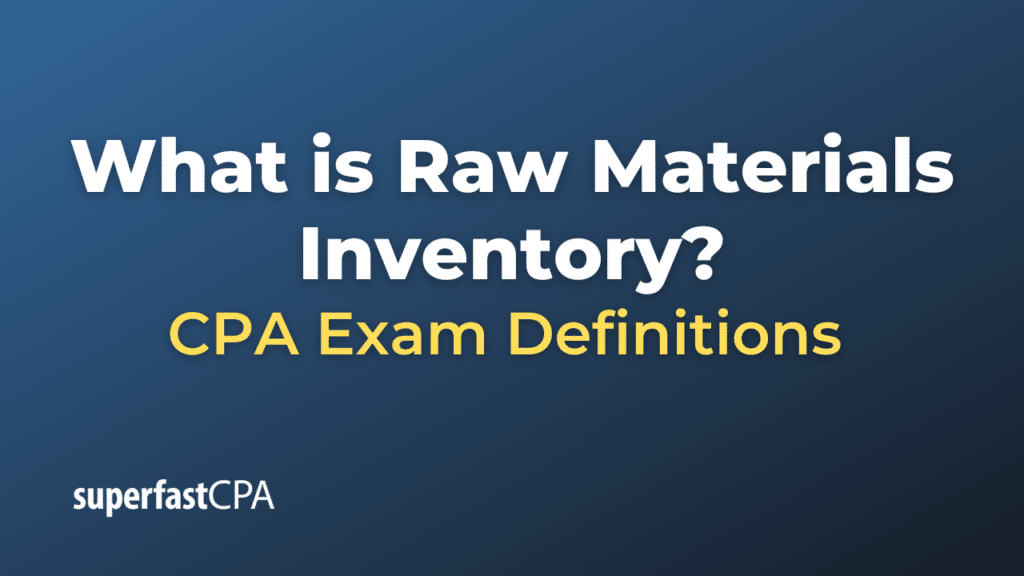Raw Materials Inventory
Raw materials inventory refers to the stock of primary materials and components that a company has on hand, which are to be used in the manufacturing process to produce finished goods. These raw materials are items that haven’t been processed, transformed, or used to create finished products yet.
In the context of accounting and inventory management, raw materials inventory is a part of the inventory account, which also typically includes:
- Work-in-progress inventory (WIP): These are semi-finished goods. They have been started in the manufacturing process but are not yet completed.
- Finished goods inventory: These are the final products that are ready for sale to the end customer.
The value of the raw materials inventory is crucial for both operational reasons and financial reporting. Operationally, companies need to ensure they have enough raw materials on hand to meet production requirements. Financially, the value of the inventory is reported on a company’s balance sheet as a current asset.
To manage their raw materials inventory effectively, companies employ various inventory management techniques such as just-in-time (JIT) inventory systems, perpetual inventory systems, or periodic inventory systems. Proper management ensures that the company does not have too much money tied up in stock (which can be costly to store and may become obsolete) or too little stock (which can disrupt production).
Example of Raw Materials Inventory
Let’s take the example of a company that manufactures wooden chairs.
Raw Materials Inventory:
- Lumber: This is the primary raw material. The company needs wood to produce chairs. At any given time, they might have stacks of different types of lumber (like oak, pine, or walnut) waiting to be cut and shaped.
- Screws and Nails: These are used to assemble the chair parts together.
- Paint or Varnish: To finish and protect the chair.
- Cushion Foam and Fabric: If the chairs have cushioned seats.
Work-in-progress Inventory (WIP): Let’s say on a given day, the company has:
- 50 chair frames that are already cut and shaped but not yet assembled.
- 30 chairs that are assembled but not painted or varnished.
- 20 chairs that are painted but are waiting for cushioning.
These chairs are in various stages of production but aren’t ready to be sold.
Finished Goods Inventory: These are chairs that are completely made, painted, cushioned, and are ready for sale.
At the end of a financial period, the company will add up the value of all the lumber, screws, nails, paint, cushion foam, and fabric they have on hand. This is the value of their raw materials inventory. The WIP inventory would be valued based on the materials used and the labor invested in those 100 chairs that are not fully finished. Finished goods would be valued based on the total production cost of the chairs that are ready for sale.
Effective inventory management for this company would mean ensuring that they have just the right amount of lumber, screws, and paint to meet their production goals without having excess materials sitting around or, conversely, finding themselves short and unable to fulfill an order.












